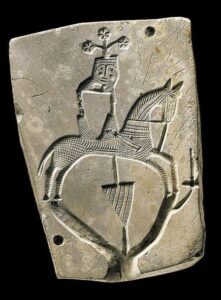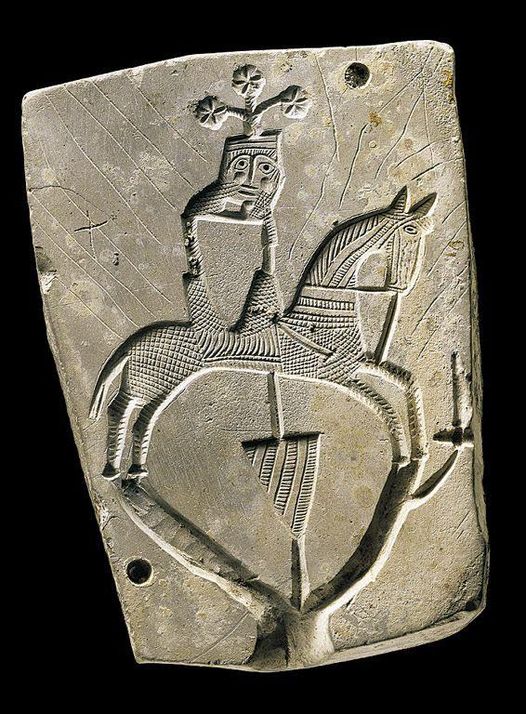The Middle Ages, spanning from the 12th to the 14th century, were a time of profound religious fervor and artistic expression. One of the fascinating artifacts from this era is the mould for a pilgrim badge, a small but significant piece of medieval culture. This particular mould, intricately designed and crafted, offers a glimpse into the lives and beliefs of medieval pilgrims, who embarked on long and arduous journeys to holy sites, seeking spiritual solace and blessings.
The Pilgrim Badge: A Symbol of Faith and Devotion
Pilgrim badges were small, portable tokens that pilgrims collected from various holy sites they visited. These badges served multiple purposes: they were mementos of the pilgrim’s journey, proof of their visit to sacred places, and often believed to carry spiritual benefits or protective powers. The badges were typically made of lead or pewter and were affordable, making them accessible to a wide range of pilgrims.

Detailed Craftsmanship
The mould depicted in the image reveals the high level of craftsmanship involved in creating these badges. This particular mould showcases a knight on horseback, adorned with intricate details that speak volumes about the artistic capabilities of the time. The knight’s armor and the horse’s trappings are meticulously rendered, reflecting the importance of such symbols in medieval society.
The use of moulds like this one allowed for the mass production of badges, enabling many pilgrims to acquire them. The detailed carvings in the mould would have produced badges with raised, three-dimensional images, making them not only religious symbols but also pieces of wearable art.
The Significance of the Imagery

The choice of imagery on pilgrim badges was highly symbolic. Knights were often depicted, symbolizing protection, bravery, and the spiritual journey. The knight on horseback in this mould could represent Saint George or other chivalric saints, embodying the virtues of courage and faith. The presence of the knight also highlights the medieval fascination with the chivalric code and its association with religious devotion.
Pilgrimage in the Medieval Period
Pilgrimage was a central aspect of medieval Christian life. Pilgrims traveled to renowned holy sites such as Santiago de Compostela in Spain, Canterbury in England, and various shrines across Europe. These journeys were undertaken as acts of penance, devotion, or in the hope of miraculous cures. Pilgrims often faced numerous hardships, making the badges they collected cherished symbols of their spiritual endeavors.
Preservation and Legacy

The survival of this mould into the present day allows us to appreciate the interconnectedness of faith, art, and daily life in the medieval period. It stands as a testament to the devotion of medieval pilgrims and the skilled artisans who crafted these badges. Museums and collections that house such artifacts help preserve the cultural and historical legacy of the Middle Ages, offering insights into the religious and social fabric of the time.
In conclusion, the mould for a pilgrim badge is more than just a tool for creating religious souvenirs; it is a window into the medieval world, reflecting the piety, artistry, and resilience of a bygone era. Through such artifacts, we continue to explore and understand the rich tapestry of human history and spirituality.
Chiếc khuôn đặc biệt này, được thiết kế và chế tạo phức tạp, mang đến cái nhìn thoáng qua về cuộc sống và tín ngưỡng của những người hành hương thời Trung cổ, những người đã bắt đầu những cuộc hành trình dài và gian khổ đến các thánh địa, tìm kiếm sự an ủi và phước lành về mặt tinh thần.
